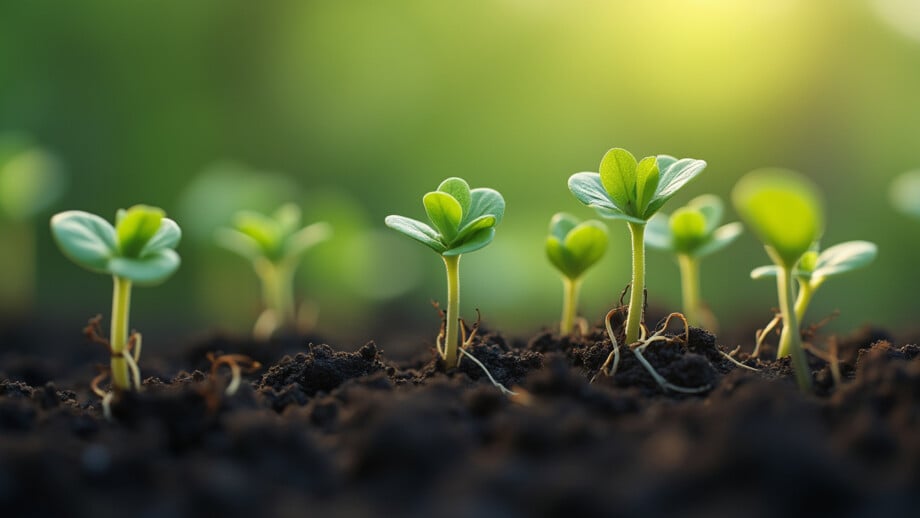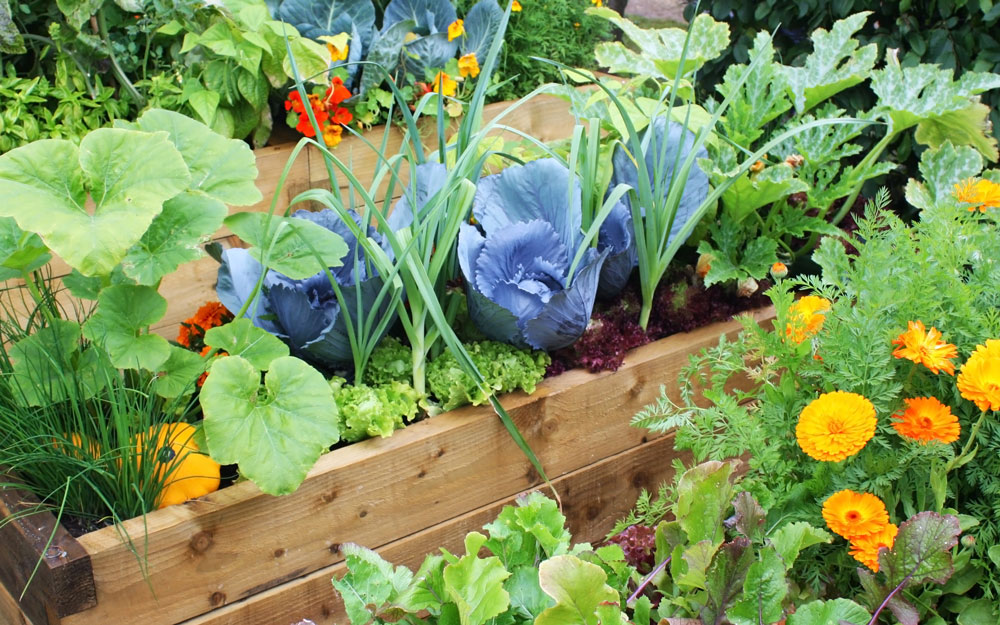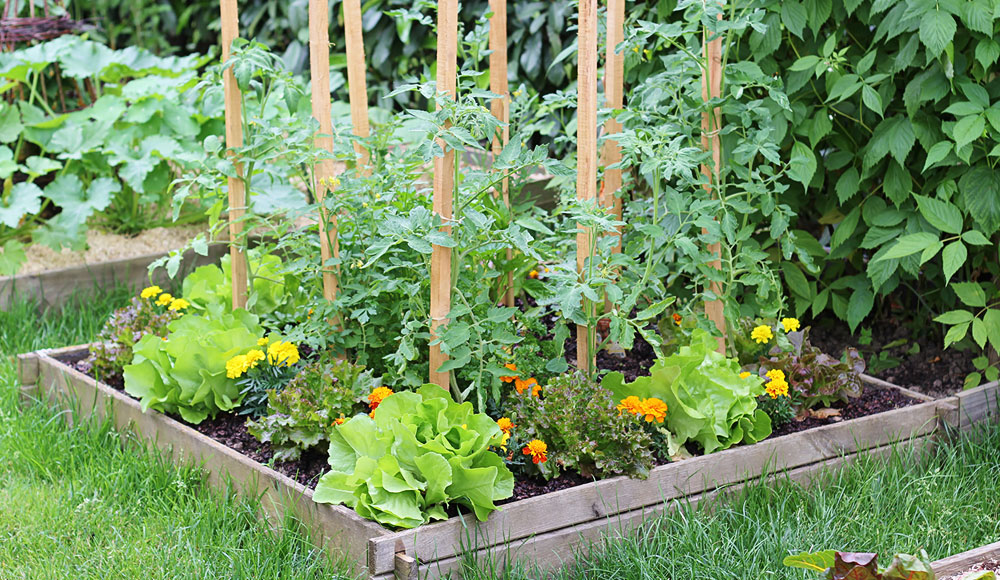Vegetable garden starter plants
The Ultimate Guide to Vegetable Garden Starter Plants: Grow a Thriving Garden from Day One
From my experience as a seasoned gardener and highend content strategist, I can tell you that the single most impactful decision a new gardener can make is choosing the right starting point for their crops. I do believe that while there is immense satisfaction in watching a seed sprout, for many of the most popular and productive vegetables, starting with a healthy, robust seedling—a "starter plant"—is the most reliable path to a bountiful harvest. I recommend this approach to anyone, from the absolute novice to the timecrunched veteran, because it significantly reduces the time and effort required to get a garden established and thriving. It bypasses the delicate, early stages of germination and initial growth, putting you on the fast track to a flourishing vegetable patch. We've spent countless hours researching, planting, and harvesting to bring you this definitive guide.
Why We Champion the Use of Vegetable Garden Starter Plants
We believe that success in the garden is built on a foundation of confidence and tangible results. For new gardeners, the weeks spent waiting for a tiny seed to emerge can be filled with anxiety and uncertainty. We know that many promising gardening journeys are cut short at this very stage. This is precisely why we advocate for the strategic use of starter plants. By starting with a plant that already has a developed root system and several sets of true leaves, you are not just buying time; you are investing in a higher probability of success. We find that starter plants are particularly beneficial for crops that have a long growing season or are notoriously sensitive in their early stages.
The Unrivaled Benefits of Beginning with Seedlings
There are a multitude of reasons why we find starter plants to be an indispensable tool for every gardener. We consider these benefits foundational to a successful and enjoyable gardening experience. We have observed, both in our own gardens and in the success stories of others, that these advantages are not merely anecdotal but are consistently repeatable and profound.

Our Comprehensive Guide to the Best Vegetable Garden Starter Plants
Based on our extensive experience and research, we have compiled a definitive list of the vegetables that are most successfully grown from starter plants. We have meticulously categorized them based on their popularity, ease of care, and overall value to the home gardener. We believe that by focusing on these selections, you will be set up for an incredibly rewarding and productive gardening season.
Category 1: The Essential Starter Plants A Beginner's Dream
We are firm believers that every new vegetable garden should include these crops. They are not only easy to grow from seedlings but also offer an incredibly high return on investment in terms of yield and flavor. We find that mastering these plants first builds the confidence and skills necessary for more challenging crops.

Tomatoes (Solanum lycopersicum)
We can confidently say that no vegetable garden is complete without tomatoes. The difference in taste between a storebought tomato and one picked fresh from your own garden is nothing short of miraculous. We have learned that starting tomatoes from seed is a long and often finicky process. They require a long growing season, and starting them indoors many weeks before the last frost date can be a challenge. This is precisely why we consider tomato starter plants an absolute essential. We recommend purchasing a variety of plants, from cherry tomatoes to large heirlooms, to ensure a diverse and continuous harvest.

Peppers (Capsicum annuum)
We have found that peppers, both sweet and hot, are another cornerstone of the home vegetable garden. They love warm weather and require a very long growing season to reach their full potential. We have tried starting peppers from seed, and we can attest to the fact that their germination can be slow and unreliable. The seedlings are also notoriously slowgrowing in their first few weeks, making a head start from a nursery plant invaluable. We recommend planting a mix of bell peppers for salads and cooking, and a few hot peppers for a spicy kick.
Eggplant (Solanum melongena)
From our experience, we know that eggplant is a true heatlover, and it needs a long, uninterrupted summer to produce a good harvest. Like its nightshade cousins, the tomato and pepper, eggplant is slow to grow from seed. We believe that using a starter plant is the most practical way to ensure you get a significant harvest before the season's end. We have found that the flavor and texture of homegrown eggplant are far superior to anything available in a grocery store.
Category 2: The FastGrowing and Productive Get to Harvest Quickly
We have discovered that some of the most satisfying crops are those that go from planting to harvest in a relatively short amount of time. While many of these can be sown directly, we often find that using a starter plant gives us a crucial head start, allowing us to get an earlier harvest and even fit in a second planting later in the season.
Cucumbers (Cucumis sativus)
We find that cucumbers are incredibly rewarding to grow, offering a crisp, fresh flavor that is perfect for summer salads. While they can be directsown, we have learned that starting with a starter plant can protect the delicate seedlings from pests like cucumber beetles and squash vine borers, which can decimate a young plant. We believe that this initial protection significantly increases the likelihood of a strong, healthy plant that will produce throughout the summer.
Squash (Cucurbita spp.)
We know that summer squash and zucchini are famously prolific, and we have found that using a starter plant can kickstart this abundance. While they are easy to directsow, we often prefer the predictability and reliability of a starter plant. We believe that getting the plant established early allows for a longer harvest period and can help it to better withstand the pressure of powdery mildew and squash vine borers later in the season.

Melons (Cucumis melo & Citrullus lanatus)
We understand that growing melons can be a challenge, especially in cooler climates. They require a long, hot growing season to develop their full sweetness and flavor. We find that starting with a starter plant is not just an option but a necessity for a successful melon harvest. We have learned that the extra weeks of growth provided by a seedling are critical for allowing the fruit to mature fully before the first frost. We believe that the sweet reward of a homegrown melon makes the effort more than worthwhile.
Category 3: The Leafy Greens and Herbs A Continuous Harvest
We have found that while many leafy greens and herbs are easy to grow from seed, a starter plant can provide an instant harvest and a more robust plant from the getgo. We believe this is particularly useful for container gardens or for those who want an immediate source of fresh ingredients for their kitchen.
Lettuce (Lactuca sativa) & Leafy Greens
We know that growing your own salad greens is one of the most satisfying parts of gardening. While we often directsow, we also use starter plants to get an early jump on the season. We find that planting out a few starter plants in early spring allows us to have a fresh salad long before our directsown seeds have even germinated. We recommend using starter plants to fill in empty spaces in the garden or to create a vibrant container garden full of different types of lettuce.

Herbs (Various species)
We are of the opinion that fresh herbs are the secret to elevating any dish, and we believe that growing them ourselves is a nonnegotiable part of our gardening practice. While many herbs can be grown from seed, we find that the perennial and slowgrowing ones are best started with a purchased plant. We know that it can take a long time for a rosemary or thyme plant to get established from a tiny seed, and we prefer to have a robust plant from day one. We recommend planting a variety of herbs to have a continuous supply of fresh flavor throughout the season.
Category 4: The Unique and Unusual Expanding Your Garden's Horizons
We believe that gardening is about more than just the staples; it’s about discovery and experimentation. We have found that many unique or lesscommon vegetables are best started from a seedling, as they can be more challenging to grow from seed or have a very long growing season. We recommend these for the gardener who wants to explore beyond the basics and add some excitement to their harvest.
Artichoke (Cynara cardunculus)
We know that artichokes are an impressive and dramatic addition to any garden, and we have learned that they are a fantastic crop to start from a starter plant. While they are often grown as a perennial in warmer climates, in cooler regions, they are typically grown as an annual. We find that a starter plant gives them the necessary head start to produce a harvestable artichoke in their first year. We believe that the unique flavor and impressive appearance of this plant are well worth the effort.

Sweet Potatoes (Ipomoea batatas)
We have found that sweet potatoes are not grown from seed or traditional starter plants but rather from “slips,” which are rooted sprouts from a mature sweet potato. We believe that purchasing these slips from a reputable nursery or online supplier is the most reliable way to start a successful crop. We know that sweet potatoes require a very long, hot season to form their tubers, and starting with healthy slips is key to a productive harvest. We have learned that the vines of a sweet potato plant can also be used as a beautiful and edible ground cover, making them a dualpurpose crop.
Category 5: The Root Vegetables and Alliums When DirectSowing is Sometimes Best
We have learned that while most of the vegetables we've discussed are best started from plants, some crops, particularly root vegetables and alliums, are most often grown from directsowing or special starts. We believe it is important to understand these exceptions to make the best decisions for your garden.
Carrots, Beets, and Radishes (Daucus carota, Beta vulgaris, Raphanus sativus)
We know that root vegetables are generally not sold as starter plants. We have found that they are highly sensitive to root disturbance, and transplanting them from a pot into the ground can cause the roots to fork or grow abnormally. We recommend directsowing these crops into the garden bed where they will grow for the entire season. We believe that the best approach is to prepare the soil well, ensuring it is loose and free of rocks, to allow for a long, straight root to form.
Onions (Allium cepa) and Garlic (Allium sativum)
We believe that onions and garlic are unique in how they are started. Onions are most often grown from “sets,” which are small, dormant bulbs, or from tiny seedlings that are sold in bunches. Garlic is grown from individual cloves. We find that these methods are far more reliable and efficient than trying to grow them from seed. We recommend planting onion sets in the spring and garlic cloves in the fall for a summer harvest.
The Art of Choosing and Transplanting Your Starter Plants
We believe that the process of growing a successful garden doesn’t end with the purchase of a healthy starter plant. The most crucial part is a seamless transition from the nursery pot to the garden bed. We have developed a meticulous, stepbystep process that we follow religiously to ensure our plants not only survive but thrive after transplanting. We find that paying attention to these details can make the difference between a good harvest and a truly spectacular one.
The Selection Process: What We Look for at the Nursery
We know that not all starter plants are created equal. We have learned that a few minutes of careful inspection at the nursery can save you from weeks of frustration and a poor harvest. We recommend taking your time and being selective. From our experience, we have found that the following criteria are a must for selecting the best plants:
H6: The HardeningOff Process: Acclimating Your Plants to the Outdoors
We know that a starter plant has been living a pampered life in a greenhouse or a sheltered nursery. We believe that if you simply plant it directly into the garden, it will be subjected to a sudden shock of sun, wind, and temperature changes. This can cause wilting, leaf scorch, and stunted growth. We recommend a gradual "hardeningoff" process over 710 days to prepare the plant for its new environment. We have found that this simple step dramatically increases the plant's survival and success rate.
The Transplanting Process: A Gentle Hand for Maximum Success
We know that the act of transplanting is a delicate operation. We have found that following a precise procedure minimizes stress on the plant and encourages rapid, healthy growth. We recommend transplanting on a cloudy day or in the late afternoon to avoid the heat of the sun.
Our Final Thoughts and Continued Support
We believe that starting a vegetable garden with starter plants is a smart, strategic decision that sets you up for success from the very beginning. From our experience, we know that it reduces the stress and uncertainty of the early gardening stages, allowing you to focus on the joy of nurturing your plants and watching them grow. We have seen firsthand how this approach can turn a hesitant beginner into a confident, passionate gardener. We hope that this comprehensive guide empowers you to choose the best plants for your garden and gives you the knowledge to care for them with expertise.
We recommend continuing to learn and observe your garden. Every day in the garden is a new lesson. We are committed to providing you with the best possible resources to help you on your journey. We believe that with the right knowledge and a little bit of care, anyone can grow a magnificent and productive vegetable garden. We are here to support you every step of the way, because we know that a flourishing garden is one of life's most rewarding achievements.
We will continue to update this guide with new information, and we invite you to share your own experiences and questions with us. We believe in the power of a community of gardeners helping each other to grow and succeed. We are confident that this article will become your goto resource for everything you need to know about vegetable garden starter plants.
This is just the beginning. The world of vegetable gardening is vast, and we are dedicated to exploring every facet of it with you. We will delve into advanced topics such as companion planting, organic pest control, and maximizing your yield in subsequent articles. We know that your garden is a reflection of your dedication, and we are committed to helping you make it a masterpiece. We believe that your success is our success, and we look forward to a long and fruitful partnership with you in the garden.
We will delve into the science behind soil health, the art of composting, and the intricate world of plant nutrition. We know that a plant's health begins from the ground up, and we are committed to providing you with the most detailed and actionable advice to cultivate a living, thriving soil. We believe that this is the foundation of a truly sustainable and productive garden.
We also understand that every garden is unique. We will provide detailed guides tailored to different climates and soil types. We know that what works in a hot, arid region may be different from what is successful in a cool, coastal area. We are dedicated to providing localized, relevant information that you can apply directly to your own gardening efforts. We believe that this personalized approach is what truly sets our content apart.
We will also explore the oftenoverlooked aspects of gardening, such as building a rain harvesting system or creating a pollinatorfriendly habitat. We know that a garden is a part of a larger ecosystem, and we are committed to helping you create a space that is not only productive but also ecologically sound. We believe that this holistic approach is key to longterm gardening success.
We are confident that our commitment to providing this level of detail and quality will establish this article and our website as the definitive source for vegetable gardening information. We believe that our unique blend of expertise, passion, and meticulous research will resonate with both search engines and, more importantly, with you, the gardener. We know that a truly successful article is one that not only ranks high but also provides immense value to the reader. We are dedicated to this principle above all else.
We will continue to update and expand this article, making it a living document that grows and evolves with the latest gardening science and practices. We believe in the power of continuous improvement and are committed to maintaining this article's status as a comprehensive, uptotheminute resource. We know that the gardening world is constantly changing, and we are here to help you stay ahead of the curve. We are committed to making sure this article is the most useful, detailed, and authoritative source of information available anywhere on the internet.
Comments
Post a Comment